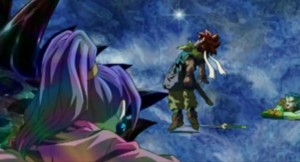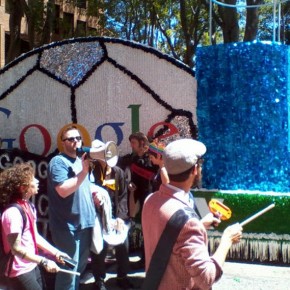
-Ryan J. Hodge
For someone who enjoys a great story, is there anything better than a narrative that engages you from the very start? Imagine a world so rich you can almost smell the scents in the air, a delivery so clever it forces you to think in a way you never thought you would. I’m Ryan J. Hodge, author, and I’d like to talk to you about…Video Games.
Yes, Video Games. Those series of ‘bloops’ and blinking lights that –at least a while ago- society had seemed to convince itself had no redeeming qualities whatsoever. In this article series, I’m going to discuss how Donkey Kong, Grand Theft Auto, Call of Duty and even Candy Crush can change the way we tell stories forever.
What video games teach us about subverting a protagonist
In a conventional story, a protagonist is not just the main character in the story; he is our window into the universe the artist has created. Whatever his raison d’être in the story may be, it is ours to see him through to the end. For the story to move on without him is to beg the question why he was the protagonist at all. So it is with video games as well. Usually, when the game begins with a realized protagonist; it will end with that very same protagonist. It’s a position that the audience members (and even authors) often take for granted…and will often fail to realize how vulnerable a position it is.

Well…Sean Bean knows how vulnerable it is.
‘Raising the stakes’ is a near-ubiquitous narrative device when telling a story. Usually it means that something about the status quo has changed for the protagonist to make his task that much more urgent/vital. In a classic ‘Three-Act’ structure, the stakes will continue to rise until the protagonist reaches the ‘lowest point’ (i.e.: the period where ‘all seems lost’). It is at this point that the audience is meant to sympathize with their hero the most and wishes to see him overcome the final opposing obstacle. In terms of gameplay, this might be translated into a sudden spike in difficulty where valuable equipment, companions, or powers have been taken away from the player.
However, even if he may die, the hero must always overcome his obstacles, right? According to the ‘monomyth’ theory detailed in Joseph Campbell’s The Hero with a Thousand Faces (1949); of course he will! Campbell himself summarized the monomyth thusly: “A hero ventures forth from the world of common day into a region of supernatural wonder: fabulous forces are there encountered and a decisive victory is won: the hero comes back from this mysterious adventure with the power to bestow boons on his fellow man.”(The Hero with a Thousand Faces, 2nd ed.,1968)
This is what I believed as the second Act of one of my favorite games, Chrono Trigger, drew to a close. After having spent hours besting horrors from across space and time, surely a hastily sprung trap from some just-introduced villain would simply be a bump in the road. At any second, we were going to figure a way out of this.

Any second now…
But we didn’t. My character was blasted to atoms, and rather than a ‘Game Over’ screen; the story simply continued.
Continue reading →









